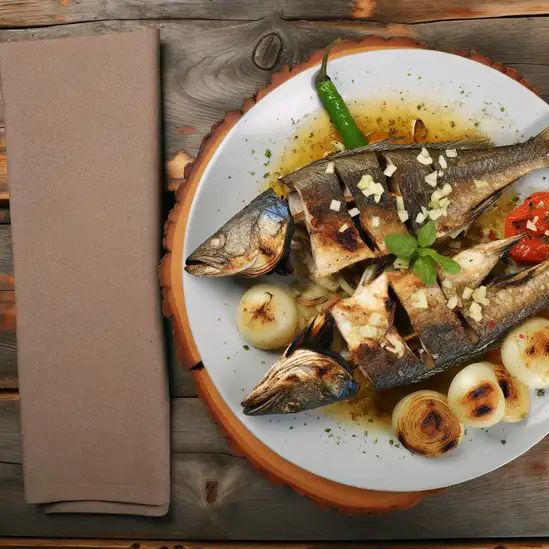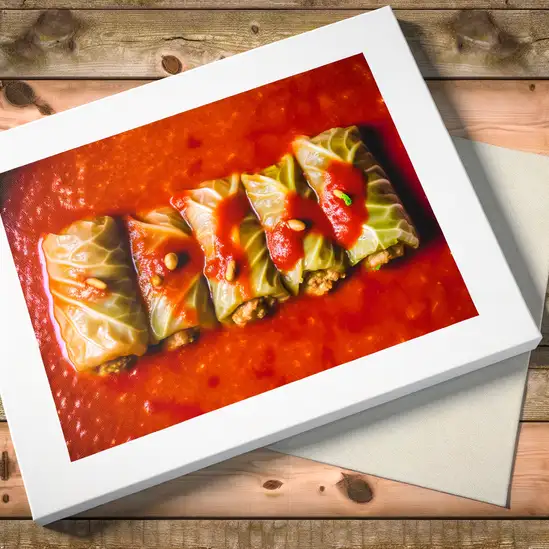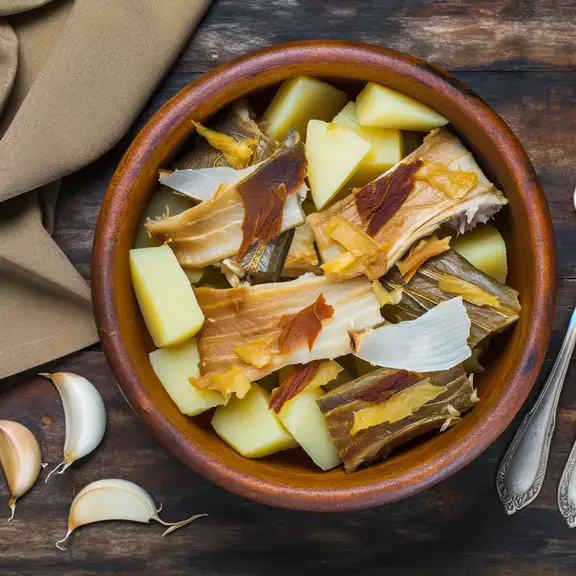



If you’re craving a place where the Adriatic Sea gently laps against sun-warmed stones and the air carries a hint of pine and salty breeze,Novi Vinodolski is where you want to be. This charming coastal town has a laid-back rhythm that instantly makes you slow down and soak in the moment. Strolling along the waterfront promenade,you’ll hear the soft chatter of locals mingling with the distant clinking of glasses from seaside cafes,while fishing boats bob quietly in the harbor. It’s the kind of place where time feels a little softer,inviting you to savor every detail. The town’s character is a beautiful blend of old-world charm and vibrant local life. Narrow cobblestone streets wind through the historic center,lined with pastel-colored houses and fragrant lemon trees. You can’t miss the scent of freshly baked pastries mingling with the aroma of grilled seafood wafting from family-run konobas. Sitting down for a meal here feels like joining a warm,extended family—freshly caught fish,drizzled with local olive oil,paired with a glass of crisp Croatian white wine,all enjoyed with the backdrop of the sea. What really makes Novi Vinodolski stand out is its genuine,unpretentious vibe. It’s not about flashy tourist spots but about feeling connected—to the sea,the history,and the people who live here. Whether you’re wandering through the peaceful parks,exploring nearby hiking trails with breathtaking views,or simply watching the sunset paint the sky in shades of pink and gold,this town invites you to slow down and truly live in the moment.
The information on this page is currently being reviewed by Tripkliq and should be used as a guide only
Eng word: Hello
Eng pronunciation: Bohk
Local language: Bok
Eng word: Goodbye
Eng pronunciation: Doh-vee-jen-ya
Local language: Doviđenja
Eng word: Thank you
Eng pronunciation: Hvah-lah
Local language: Hvala
Eng word: How much
Eng pronunciation: Koh-lee-koh
Local language: Koliko
Eng word: Toilet
Eng pronunciation: Toh-ah-let
Local language: Toalet
Eng word: Help me
Eng pronunciation: Poh-moh-zee mee
Local language: Pomozi mi
Eng word: Yes
Eng pronunciation: Dah
Local language: Da
Eng word: No
Eng pronunciation: Neh
Local language: Ne
Eng word: Excuse me
Eng pronunciation: Oh-proh-stee-teh
Local language: Oprostite
Novi Vinodolski is renowned for the Vinodol Code, one of the oldest legal documents written in the Glagolitic script, dating back to 1288. It is a significant piece of Croatian legal history and showcases the city's medieval importance.
The city was historically ruled by the noble Frankopan family, one of the most influential families in Croatian history. Their legacy is still evident in the region's architecture and cultural heritage.
The Tower of Kvadrac is a prominent historical landmark in Novi Vinodolski. It is a remnant of the Frankopan castle and serves as a symbol of the city's medieval past.
Novi Vinodolski played a significant role in preserving the Glagolitic script, an ancient Slavic alphabet. The city's historical connection to this script highlights its contribution to Croatian literacy and culture.
This historic church, located in the heart of Novi Vinodolski, dates back to the 14th century. It is a beautiful example of Gothic and Baroque architecture and a must-visit for history enthusiasts.
Novi Vinodolski is the birthplace of Ivan Mažuranić, a prominent Croatian poet, linguist, and politician. He was the first Croatian ban (viceroy) not of noble descent and is celebrated for his contributions to Croatian literature and national identity.
Novi Vinodolski has a rich maritime history, with its location on the Adriatic Sea making it an important center for fishing, trade, and shipbuilding throughout the centuries.
The Old Town of Novi Vinodolski is a treasure trove of history, with narrow streets, stone houses, and historical landmarks that reflect the city's medieval and Venetian influences.
The city is part of the picturesque Vinodol Valley, which has been inhabited since prehistoric times. The valley's fertile land and strategic location contributed to the region's historical significance.
In Novi Vinodolski, the most common Power Adaptor is Type C, Type F.



A traditional omelette made with seasonal vegetables, herbs, and sometimes seafood, reflecting the local flavors.

A slow-cooked dish typically made with meat (like lamb or veal) and vegetables, prepared under a bell-like lid covered with embers.

Grilled fish, often fresh catch from the Adriatic Sea, seasoned simply with olive oil, salt, and lemon.

A traditional black risotto made with cuttlefish or squid, flavored with their ink, garlic, and parsley.

Cabbage rolls stuffed with minced meat and rice, cooked in a savory tomato sauce, popular in many Croatian households.

Salted cod prepared in various ways, often served with potatoes and drizzled with olive oil, especially during festive occasions.

A delicious dish of shrimp cooked in a sauce made from garlic, olive oil, white wine, and parsley, often served with bread.

If you ever find yourself wandering through Split,it’s like stepping into a living,breathing storybook where ancient history and vibrant modern life dance together effortlessly. The moment you stroll along the Riva promenade,the salty breeze from the Adriatic mingles with the aroma of fresh espresso and grilled seafood wafting from nearby cafés. Locals chat animatedly in the sun-dappled squares,their laughter blending with the distant hum of boats bobbing gently in the harbor. There’s a laid-back energy here that feels both timeless and alive,inviting you to slow down and soak it all in.
Split’s heart beats strongest in Diocletian’s Palace,a sprawling Roman fortress that’s less a museum and more a neighborhood where people live,shop,and gather. Walking through its ancient stone alleys,you’ll catch glimpses of colorful markets,artisan shops,and cozy taverns tucked into centuries-old walls. At night,the city transforms as lanterns flicker on,and the sound of live klapa singing—traditional a cappella harmonies—drifts through the air,wrapping you in a warm,soulful embrace.
What really makes Split unforgettable is how effortlessly it blends the old with the new. You can savor a plate of fresh octopus salad while watching fishermen haul in their catch,then wander to a rooftop bar for a cocktail as the sun sets behind the islands. It’s a place where every corner tells a story,every meal feels like a celebration,and every moment invites you to become part of its ongoing tale.
If you ever find yourself wandering through the sun-drenched streets of Dubrovnik,you’ll immediately feel like you’ve stepped into a living storybook. The city’s ancient stone walls rise proudly against the sparkling Adriatic,and as you stroll along the marble-paved Stradun,the salty sea breeze mingles with the scent of fresh pine and blooming bougainvillea. There’s a rhythm here—a gentle hum of life where history and modern charm dance together effortlessly.
Dubrovnik’s character is woven into every corner:the clatter of café cups,the murmur of locals chatting in cozy taverns,and the distant call of seagulls overhead. You can almost taste the city in the air—briny and fresh,with hints of grilled seafood and ripe figs from the markets. Sitting at a seaside restaurant,watching the sun dip behind the fortress walls,you’ll savor dishes bursting with Mediterranean flavors,paired with a glass of crisp Croatian white wine.
What makes Dubrovnik truly special is how it balances its rich past with a vibrant present. The city’s narrow alleys invite exploration,revealing tucked-away galleries,artisan shops,and lively squares where music spills out into the streets. Whether you’re tracing the footsteps of ancient mariners or simply soaking up the golden light on a quiet terrace,Dubrovnik feels like a warm embrace—inviting,timeless,and utterly unforgettable.
If you ever find yourself wandering the Dalmatian coast,Zadar is one of those places that sneaks up on you with its quiet charm and unexpected magic. The moment you step onto its ancient stone streets,there’s this warm,timeless feeling—like the city is gently humming a tune just for you. The salty breeze from the Adriatic mingles with the scent of fresh pine and blooming jasmine,wrapping around you as you stroll along the waterfront. It’s a place where history isn’t just in museums; it’s alive in the crumbling Roman ruins,the medieval churches,and the lively squares where locals gather to chat and sip coffee.
What really sets Zadar apart is its playful spirit. You’ll hear it in the waves as they dance through the Sea Organ,an extraordinary installation that turns the sea’s movement into haunting melodies. And just a few steps away,the Sun Salutation lights up the night with a mesmerizing display of colors,making the waterfront feel like a celebration of nature and art. Grab a seat on the stone benches,watch the sun dip below the horizon,and you’ll understand why Alfred Hitchcock once called Zadar the most beautiful sunset in the world.
The city’s vibe is relaxed but vibrant,with cozy konobas serving up fresh seafood and local wines that taste like the essence of the region. Whether you’re wandering through the bustling market,exploring narrow alleys,or simply soaking in the views from a café terrace,Zadar invites you to slow down,breathe deeply,and savor every moment.
If you ever find yourself wandering the sun-drenched coast of Croatia,Pula is the kind of place that wraps around you like a warm,familiar blanket. There’s this effortless charm in the air—ancient stone walls bathed in golden light,the salty breeze carrying the distant hum of boats and laughter from seaside cafes. Walking through Pula feels like stepping into a living history book,but one that’s vibrantly alive with locals chatting over espresso and the clinking of glasses filled with crisp,local wine.
The city’s Roman amphitheater is impossible to miss,standing proudly as a testament to centuries past,yet it pulses with modern energy during summer concerts and festivals. Strolling through the narrow streets,you’ll catch the scent of fresh seafood grilling nearby,mingling with the earthy aroma of pine trees from the surrounding hills. It’s a place where time slows just enough for you to savor a plate of black risotto or sip on a cold craft beer while watching the sun dip into the Adriatic.
What really makes Pula special is its blend of rugged coastal beauty and warm,unpretentious spirit. The locals have a relaxed vibe,welcoming you with genuine smiles and stories about their city’s layered past. Whether you’re exploring Roman ruins,lounging on a pebble beach,or simply people-watching in a bustling square,Pula invites you to soak in its rich culture and easygoing rhythm. It’s a city that stays with you long after you’ve left,whispering tales of history,sea,and sun.
If you wander into Šibenik,you’ll immediately feel like you’ve stepped into a place where history and the sea have been quietly chatting for centuries. The city’s old stone streets,worn smooth by footsteps over hundreds of years,invite you to slow down and soak in the atmosphere. There’s a gentle hum of life here—fishermen unloading their catch,the clinking of glasses from cozy waterfront cafés,and the distant call of seagulls mingling with the soft splash of waves against the harbor walls.
What makes Šibenik truly special is its blend of rugged Adriatic charm and rich cultural layers. The sun warms the limestone walls,making them glow golden in the late afternoon,while the scent of pine trees drifts in from the nearby hills. You can’t miss the stunning Cathedral of St. James,a masterpiece carved entirely from stone,where every detail tells a story. Wander through the narrow alleys,and you’ll find vibrant markets bursting with fresh figs,olives,and local cheeses that taste like sunshine.
Evenings in Šibenik have a relaxed,almost magical feel. The city lights flicker on,reflecting in the calm waters,and the air fills with the aroma of grilled seafood and herbs. Locals gather in lively taverns,sharing laughter and stories over glasses of crisp Croatian wine. It’s a place where time slows just enough for you to savor the simple pleasures—good food,warm smiles,and the endless blue horizon.
If you wander into Rijeka,you’ll immediately feel its pulse—a lively,salty breeze mingling with the hum of a bustling port city that’s unapologetically itself. It’s not polished like some of Croatia’s more famous coastal towns,but that’s exactly what makes it so magnetic. The streets buzz with a mix of locals chatting over coffee,the clatter of trams,and the occasional distant call of seagulls. You can almost taste the sea in the air,a briny freshness that pairs perfectly with a glass of local Malvazija wine at a cozy café.
Rijeka wears its history on its sleeve,from the grand Austro-Hungarian architecture to the colorful street art that pops up in unexpected corners. The city’s character is a blend of old-world charm and modern creativity,with a vibrant arts scene that spills into its festivals and galleries. Strolling along the waterfront,you’ll catch fishermen unloading their catch,the scent of grilled fish wafting from nearby taverns,and the laughter of families enjoying the evening.
What really sticks with you is Rijeka’s warmth—people here are genuine,proud of their city’s quirks and stories. Whether you’re exploring the lively market,climbing up to Trsat Castle for sweeping views,or simply soaking in the rhythm of the harbor,Rijeka invites you to slow down and savor its unique blend of sea,culture,and everyday life. It’s a place that feels like a well-kept secret,but one you’ll want to shout about once you’ve been.
Rental services for sunbeds, umbrellas, or water sports equipment may charge tourists significantly higher prices than locals.
Tourists may encounter exchange offices offering poor rates or charging hidden fees when converting money.
Scammers may create fake online listings for apartments or villas, asking for upfront payments and disappearing afterward.
Some taxi drivers may overcharge tourists by not using the meter or taking unnecessarily long routes.
Tourists may be approached by individuals posing as parking attendants who demand cash payments for fake fines.
Some restaurants may add extra items or hidden fees to the bill, assuming tourists won't notice.
Vendors may sell counterfeit goods or overpriced souvenirs, targeting unsuspecting tourists.
The possession, use, and distribution of recreational drugs are illegal in Croatia, including Novi Vinodolski. Penalties for drug-related offenses can be severe, including fines and imprisonment. Tourists should avoid any involvement with illegal substances and be cautious about carrying prescription medications, ensuring they have proper documentation if required.
In Novi Vinodolski, Croatia, smoking is prohibited in enclosed public spaces such as restaurants, cafes, and public transportation, unless there are designated smoking areas. Outdoor smoking is generally allowed, but tourists should be mindful of no-smoking signs and local regulations. Smoking is also prohibited in certain public areas like playgrounds and near schools.
Vaping is treated similarly to smoking in Croatia. It is prohibited in enclosed public spaces unless explicitly allowed. Tourists should avoid vaping in areas where smoking is banned and be respectful of others in public spaces. Always check for local signage or ask for clarification if unsure.
What are other people saying about Novi Vinodolski?
Recent Social posts about Novi Vinodolski
There is nothing to show you for now.